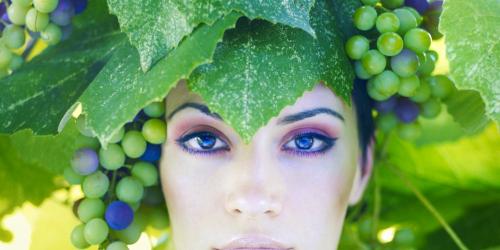Better understanding the activity of the skin to better target his needs during the day and thus maintain its balance and beauty, this is the promise of cutaneous chronobiology.
Coming from chronobiology , a science that studies the biological rhythms of living beings, cutaneous chronobiology observes the particular rhythms of the epidermis. Like our body, our skin has its own biological clock.
4 major activity periods for the skin in one day
Also, over 24 hours - the duration of a circadian cycle - we observe a natural activity of the skin in 4 phases.
- Awakening
What is happening to the skin? "Its level of activity and hydration is at its lowest, it is mainly lacking water," says Anna Persaud, CEO of British cosmetics brand This Works. Inflammatory by increasing cortisol levels, it is vulnerable to attack. Its DNA repair process is less active, "it needs protection, a shield against aggression".
How does this translate? There is redness and small local irritation.
What do we do ? Firstly, it rehydrates deeply to reduce inflammation and thus reduce redness . Secondly, we offer her a protective shield against the external aggressions ( pollution , UV ...) that she is about to face.
The assets to be favored: glycerine, allantoin, bisabolol, aloe vera , rose water, vitamin B, vitamin E ...
- The day
What is happening to the skin? Its level of hydration increases naturally until reaching a peak of sebum at the beginning of the afternoon. "At the end of the day, the epidermis naturally loses its vitality and therefore its radiance," adds Persaud.
How does this translate? Lunchtime is usually the time when we draw paper and matte powder to fade the shine . At the end of the afternoon, the complexion seems duller, like slightly gray.
What do we do ? Light skin care, such as a mist or anti-pollution lotion, boosts the radiance and energy of the skin.
The assets to be favored: hyaluronic acid , rosemary, peppermint, zinc, manganese, vitamin C ...
- The evening
What is happening to the skin? The epidermis has accumulated a lot of pollutants during the day, "we go into detox mode!", Observes Anna Persaud. At the same time, the epidermis sees its melanin levels and its repair capacity increase. This is the time when the skin is most receptive to care.
How does this translate? The complexion is blurred, the skin shining in places.
What do we do ? A make- up removal followed by a cleaning is obligatory. To facilitate the repair work of the epidermis, we will also apply a nourishing care more or less rich depending on the nature of its skin. It is also time to focus on the targeted care: anti-stain serum, anti-imperfections, radiance ...
The assets to be favored: jojoba, argan, borage, evening primrose, coconut oil , shea butter, hyaluronic acid, vegetable squalane, honey, clay, fruit acids ...
- The night
What is happening to the skin? The skin loses its water at high speed, its melatonin level reaches its peak. At the same time, the cells begin their work of detoxification thanks to a microcirculation at its maximum, which allows oxygenation and micro-nutrition of the skin. It is also the time of reproduction of the stem cells of the epidermis that will replace the old cells.
How does this translate? During the night, the skin dries slowly but surely.
What do we do ? "We sleep, it's the best of care," recalls Anna Persaud. Nothing cosmetic at this stage except for some natural strategies to adopt to get a restful sleep : it avoids overheating his room, even airing 5 minutes before going to bed. We stop the screens and their blue light deleterious at least 30 minutes before slipping under the sheets.
You can also rely on aromatherapy to promote relaxation by soaking a handkerchief a few drops of lavender essential oil or sweet orange. Better, we use a complex specifically prepared for this purpose available in organic stores and parapharmacies.
Finally, we allow 10 minutes of meditation to reach a deep relaxation. With dozens of apps now available, anyone can get started!




